U.S. Department of Energy (DOE) meets regularly with a coalition of federal government agencies comprising the Federal Interagency Working Group on Healthy Homes. Below, you can find information about each agency taking part in this working group as well as additional resources.
U.S. Department of Energy (DOE)
The mission of the U.S. Department of Energy (DOE) is to ensure America’s security and prosperity by addressing its energy, environmental and nuclear challenges through transformative science and technology solutions.
The Office of Energy Efficiency and Renewable Energy (EERE) accelerates development and facilitates deployment of energy efficiency and renewable energy technologies and market-based solutions that strengthen U.S. energy security, environmental quality, and economic vitality.The Office of EERE supports President Obama’s all out, all-of-the-above approach to American energy.
Energy efficiency is a low cost way to save money, support job growth, reduce pollution, and improve the competitiveness of American businesses. Renewable energies strengthen our nation’s security and economy, as we increase domestic production of energy sources that are environmentally sustainable.
DOE’s Weatherization and Intergovernmental Program provides grants, technical assistance, and information tools to states, local governments, community action agencies, utilities, Indian tribes, and overseas U.S. territories for their energy programs. These programs coordinate with national goals to reduce petroleum consumption and increase the energy efficiency of the U.S. economy. They aim at market transformation to reduce market barriers to the cost effective adoption of renewable energy and energy efficiency technologies.
 |
U.S. Department of Housing and Urban Development (HUD)’s Office of Healthy Homes and Lead Hazard Control (OHHLHC)
The Office of Healthy Homes and Lead Hazard Control (OHHLHC) is unique among federal agencies. The OHHLHC was established to eliminate lead-based paint hazards in America’s privately owned and low-income housing and to lead the nation in addressing other housing-related health hazards that threaten vulnerable residents.
As one means of addressing substandard housing, the OHHLHC provides funds to state and local governments to develop cost-effective ways to reduce lead-based paint hazards. In addition, the office enforces HUD’s lead-based paint regulations, provides public outreach and technical assistance, and conducts technical studies to help protect children and their families from health and safety hazards in the home.
Below are some helpful resources released by HUD OHHLHC, including publications on a National Healthy Homes Strategy, lists of grantees for current HUD funded healthy homes programs, and information about SHHIP, an exciting new initiative aimed at increasing collaboration between local governments and nonprofits who perform energy efficiency, healthy housing, and home repair services.
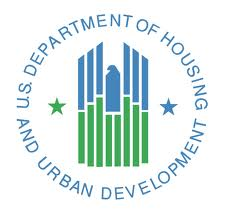 |
Environmental Protection Agency (EPA) Indoor Environments Division
The Environmental Protection Agency (EPA) is a critical partner in the effort to increase healthy housing conditions across the county. EPA administers the Indoor Environments Program, the goal of which is to reduce the environmental health risks posed by contaminants in indoor environments in new and existing homes, schools, offices, and other buildings.
EPA recently released “Healthy Indoor Environment Protocols for Home Energy Upgrades,” a voluntary guidance document developed in collaboration with the White House Council on Environmental Quality (CEQ) Recovery Through Retrofit Initiative and the DOE initiative to develop Guidelines for Home Energy Professionals. This voluntary guidance is particularly useful for the Weatherization Assistance Program network because it aims to seize opportunities for health and safety improvements within the boundaries of DOE’s mandate as an energy efficiency program. The Protocols also include a helpful client education appendix that enables weatherization practitioners to recommend specific behavioral actions to extend the life of the interventions they provide and empower clients to maintain healthier, safer, and more energy efficient homes.
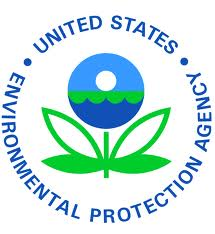 |
|
Centers for Disease Control and Prevention (CDC)’s Healthy Homes Program
The Center for Disease Control (CDC)’s healthy homes program is a coordinated, comprehensive, and holistic approach to preventing diseases and injuries that result from housing-related hazards and deficiencies. CDC also funds the National Asthma Control Program, which aims to reduce the number of deaths, hospitalizations, emergency department visits, school days or workdays missed, and limitations on activity due to asthma. CDC provides helpful educational documents to assist organizations in developing healthy homes initiatives and educate the public about the dangers of hazardous housing conditions. CDC also provides state specific home health related data through its National Environmental Public Health Tracking Program, which allows states and localities to analyze current housing conditions and target what types of interventions they may seek to provide. As such, CDC is a wonderful resource for organizations and agencies for holistically addressing energy efficiency and healthy homes issues.
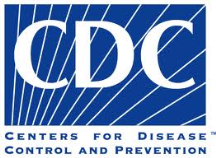 |
|
U.S. Department of Agriculture (USDA)’s Healthy Homes Initiative
The U.S. Department of Agriculture (USDA)’s Healthy Homes Partnership is coordinated by Auburn University and administered on the ground by State Cooperative Extension offices. Its network of state coordinators have partnered with state agencies, medical professionals, schools, and community groups to educate families on home health hazards. The booklet Help Yourself to a Healthy Home is a self-help guide on home health issues, and can be a useful client education tool. Available in English and Spanish, it provides simple action steps to improve home safety, covering topics such as pest management, asthma triggers, mold, lead, etc. USDA also funds Rural Rehabilitation Loans and Grants, which when coordinated with weatherization activities, can improve the structural integrity of homes for low-income families to allow for the most efficient weatherization work.
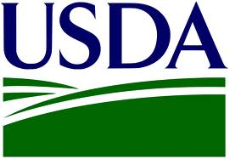 |
|
Office of the Surgeon General (OSG)
In June of 2009, the Surgeon General issued a Call to Action to Promote Healthy Homes. Included in this release are steps that individuals, organizations, health care providers, and state and local governments can take to educate the public about maintaining healthy homes, and implement healthy homes protocols to improve public health.
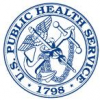 |
|
U.S. Department of Labor (DOL)
Many of the principles of maintaining a healthy home, particularly unintentional injury prevention, are transferrable to the workplace. Individuals spend 90% of their time indoors, and although most of that time is spent in their own homes, a significant part of that time is spent in the indoor work environment. As such, the Occupational Safety and Hazard Administration, run by the U.S. Department of Labor, recognize the importance of maintaining a safe working environment for American workers.
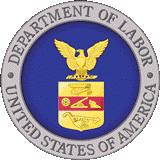 |
|
National Institute of Standards and Technology (NIST)
 |
If you have any questions or would like to request additional resources, please contact us.





